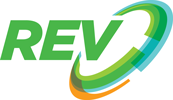By Denise Klarquist
With the seeming explosion of energy efficiency programs and tools of late, one would think that energy conservation was something new. However, we’ve been trying to curb energy use since the 1970’s when the energy crisis forced us to take a hard look at consumption and conservation.
In spite of successful initiatives such as the US Environmental Protection Agency’s (EPA) ENERGY STAR program, launched in 1992 to identify and promote energy-efficient products to reduce greenhouse gas emissions, why are we still so wasteful?
There are numerous reasons, in part because some energy sources are still relatively cheap and also because the current climate change crisis is harder for businesses and individuals to experience on a visceral level, than say brown-outs and exorbitant bills.
However, rapidly increasing energy costs and the urgent need to reduce GHGs mean that we must give energy reduction high priority. As anyone in business knows, metrics can be a vital key to change — if you can’t measure it, you can’t manage it. But up until relatively recently, it’s been a challenge to easily measure and benchmark resource use, let alone know if efforts were in line with expected results. The task of tracking and comparing, because it could be viewed as a necessary responsibility, rather than a rewarding exercise, is easy to disregard in lieu of other priorities. Thus, the long-term value of ongoing measurement and reduction is lost.
Fortunately, innovations in technology and behavior change are making it easier, and in some cases even fun, to monitor, measure, and reduce energy use. These tools below — for business or home — help track, compare and even report energy usage. With visually appealing, easy to access dashboards, step-by-step online guides, and/or gamification aspects, energy reduction can now be an embedded long-term habit, with much more significant results.
ENERGY STAR Portfolio Manager®
A current favorite tool of ours in Sustainability Circles, the EPA’s ENERGY STAR Portfolio Manager® is an online tool to measure and track energy and water consumption, as well as greenhouse gas emissions. Use it to benchmark the performance of one building or a whole portfolio of buildings, all in a secure online environment.
Measurabl
Measurabl helps organizations report to their stakeholders using third party sustainability standards, as well as benchmark and improve performance. Users have access to a cloud-based solution to import data and a guided process to file sustainability reports, such as GRESB (Global Real Estate Sustainability Benchmark).
PG&E Business Energy Checkup
For organizations within the PG&E territory, Business Energy Checkup is the ultimate online self-assessment tool. Business Energy Checkup helps track usage and costs over time, compare to similar businesses, recommend customized energy-saving options, and create a saving plan.
Lucid Building DashBoard
From major corporations to K-12 public schools, Building Dashboard enables energy reduction competitions, showcases real-time building performance and green features, and empowers occupants to become active participants in energy management.
MyEnergy
For the home, MyEnergy, A Nest Company, makes it easy for users to track utility usage and spending by visualizing a home’s gas, water, and electric usage all in one place. Homeowners can also compare their energy usage to others, using Facebook or Google to compare energy savings against friends, family and people nearby.
OPower
Targeted at utilities, OPower combines a cloud-based platform, big data, and behavioral science to help utilities around the world reduce energy consumption and improve their relationship with their residential customers. This helps consumers lower their energy use and costs, and significantly reduces carbon emissions.
Xerox
And as long as we’re on the subject of fun measurement tools, we have to mention the Xerox Print Awareness Tool, a software application, developed at Xerox’ European Research Center. It asks how many copies you think you print each month, and then compares it to your actual printing use. Based on their nominal printing requirements, users are given a monthly allocation of points – turning printing into a kind of game. Peer comparison and saving recommendations are also given.
With these tools, and a huge range of other innovations coming to market, metrics and measurement will not longer be the chore it once was, managed with spreadsheets and monthly reports that gather dust. These technologies may be the most important keys to behavior change and significant reduction in energy and resource consumption.


